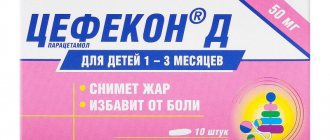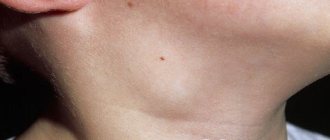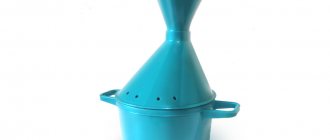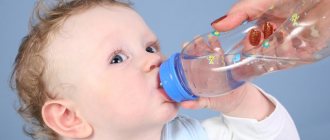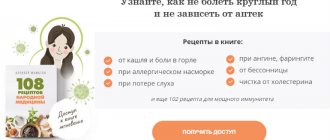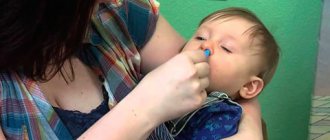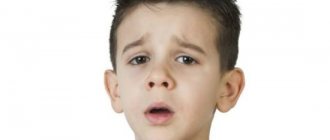Whooping cough is a bacterial disease transmitted by airborne droplets from a sick person to a healthy person. During a cough, bacteria fly out of the respiratory tract of an infected person and penetrate through the nasal cavity onto the bronchial mucosa of a person nearby. There they irritate the receptors and cause uncontrollable coughing, which literally turns into vomiting.
Vaccinations against whooping cough begin at 3 months of age along with vaccinations against diphtheria and tetanus - usually the DTP vaccine is used. Of the three components of the vaccine, pertussis is the most difficult to tolerate. And it often happens that weakened children or children who have previously had severe reactions to vaccination are vaccinated with an ADS drug that does not contain a pertussis component.
Timely vaccination can reduce the risk of disease by 80 percent, and if infection does occur, the disease progresses more easily.
CAUSE OF WHOOPING COUGH
Why does whooping cough occur and what is it? This is the name of an infectious, highly contagious disease that affects the respiratory system and nervous system, and is accompanied by characteristic attacks of convulsive cough. The causative agent of whooping cough is Bordet-Gengou (whooping cough bacillus), which is transmitted from sick to healthy people through airborne droplets when coughing.
Pertussis sticks can be of three main subtypes - the aggressive and severe first type of infection, and the more favorable and moderately severe ones - the second and third types of sticks. However, the age and previous state of health of the child also play an important role in the development of whooping cough.
Periods of illness:
- incubation period – 2-14 days,
- initial or catarrhal period – 2-14 days,
- period of convulsive cough – from 1 month or more,
- recovery – 1-2 months.
Whooping cough is transmitted by airborne droplets, spreading from its owner 2.5 meters to the sides. The bacillus is not transmitted through care items, and susceptibility to whooping cough ranges from 70 to 100%, depending on the degree of group density and the length of stay in the group. You can get whooping cough at any age from the neonatal period, children are especially often sick during the cold season - from November to March, when they practically do not go for walks and sit at home or in kindergarten. Increases in incidence occur approximately once every three to five years; surviving whooping cough provides lifelong lasting immunity.
Before the age of one year, whooping cough is very severe, with a high mortality rate (death) - 50-60% of cases among unvaccinated children. After vaccination against whooping cough, if the disease develops, it is not as pronounced, without characteristic attacks.
Routes of transmission and causes of the disease
The causative agent of the disease in question is Bordetella parapertussis.
This is a parapertussis bacillus, which has the same pathogenic properties as the whooping cough bacillus. It should be noted that it differs in some cultural and biochemical characteristics. How is parawhooping cough transmitted (symptoms in children, treatment will be discussed below)? The source of infection is a sick child, and sometimes a bacteria carrier. The infection is transmitted by airborne droplets.
The disease in question is characterized by periodic surges in incidence, as well as epidemic outbreaks in kindergartens and schools.
Parapertussis is an acute infectious disease. Its main symptom is a strong, non-productive cough that does not go away for a long time. Tracheobronchitis often occurs in this case.
SYMPTOMS OF WHOOPING COUGH
The incubation period for whooping cough is 6-20 days (usually 7 days). If whooping cough occurs in a child, the main symptom is attacks of severe spasmodic coughing, repeated over a long period of time (see photo).
However, the first signs of whooping cough in children resemble a common acute respiratory infection: malaise, loss of appetite, slight runny nose, rare dry cough, fever (most often up to 37-37.5 degrees, in some cases up to 39 degrees).
Day after day, the cough intensifies; on days 12-14 of the disease it becomes spasmodic and paroxysmal in nature. At night, coughing attacks tend to become more frequent, preventing the baby from sleeping peacefully. Depending on the course of the disease, attacks can last 4-5 minutes and repeat up to 20 times a day. After the coughing attack ends, the child may complain of pain in the chest and abdomen. In some cases, the disease is accompanied by vomiting.
The disease occurs in three stages (catarrhal, paroxysmal and convalescent stage). In general, the illness lasts 6-8 weeks.
- Catarrhal. The general condition of the child remains without significant changes. Body temperature may rise to subfebrile levels (37.5°C). A dry cough appears, worsening in the evening and at night. The cough gradually becomes obsessive and gradually becomes paroxysmal. There may be a runny nose, decreased appetite, restlessness and irritability. The symptoms resemble those of pharyngitis, laryngitis, and tracheitis. The more severe the disease, the shorter the catarrhal stage. So, in children in the first year of life, the duration of the catarrhal period is 3-5 days, in older children – up to 14 days.
- Paroxysmal. There are no signs of acute respiratory infections at all, and the cough becomes obsessive and spasmodic. This occurs in the second or third week of illness. It is at this stage that it is possible to recognize whooping cough in a child by its characteristic cough. An experienced pediatrician will immediately determine by the type of cough whether it is whooping cough or not. And this does not require any diagnostics or laboratory tests. The signs of whooping cough in a vaccinated child at this stage appear much milder. It often happens that whooping cough is tolerated without a diagnosis: you cough and it goes away without any treatment.
- Resolution period (2 to 4 weeks). During this period, the body’s immunity mobilizes its strength and, with the help of antibiotics, defeats the aggressor. The cough subsides, attacks become less frequent. The “rooster” character of the cough disappears. The composition of sputum changes - it becomes mucopurulent and gradually stops being released. Over time, all the symptoms of the disease gradually disappear and the baby recovers.
Severe whooping cough in children can lead to serious consequences and complications, in particular, hypoxia develops, as a result of which the blood supply to the brain and heart muscle is disrupted. If the treatment method for whooping cough is incorrect, children may have complications in the functioning of the respiratory system, developing pleurisy, emphysema, and pneumonia. Other bacteria can also develop in stagnant lung tissue.
First signs
Typically, from the moment the bacteria enters the body until the first manifestations of the disease appear, three days to two weeks pass. At this time, nothing bothers the baby, the child’s condition is not disturbed. Sometimes some children may experience some weakness or decreased mood. Parents do not pay attention to these earliest signs, attributing them to fatigue or a change in the baby’s mood.
After the end of the incubation period, the first symptoms appear that are characteristic of parapertussis infection:
- Coughing attacks. They usually occur in a fairly mild form. The baby coughs annoyingly. Attempts to cough well during the first stages of the disease do not bring results. If treatment is not started in time, the cough will noticeably worsen. The child tries to clear his throat, but he fails. When talking, a wheeze appears, and when breathing, a characteristic whistle appears.
- Increased body temperature. In most children it increases to 37-38 degrees. Against the background of high temperature, chills occur and fever appears. The baby feels bad and becomes capricious. Children don't want to eat and don't play with toys. Newborns and infants may experience vomiting due to high fever.
- Intoxication. When bacteria multiply, many bacterial toxins appear in the blood. They provoke inflammation and significantly worsen the baby’s condition. Young children develop headaches, and children feel general weakness. They feel very unwell. Due to an intense cough, children often complain of pain in the abdomen or chest.
- Changing the child's psyche. During illness, children begin to behave differently. They become more capricious. Habitual activities do not bring them joy. Playing with peers or toys is not fun. The more severe the disease, the more time the baby spends at home and refuses to go out into the yard or onto the street. As body temperature increases, the child tries to lie down more. After a coughing attack, infants may cry and refuse to breastfeed.
For many, whooping cough is associated with childhood and the cause of long-term cough in adults is considered to be inappropriate treatment or chronic bronchitis. But signs of whooping cough can also appear in adults. You just need to know them. This article will discuss how to recognize whooping cough in adults.
Whooping cough is a bacterial infection of the respiratory tract that impairs the function of the respiratory tract, that is, breathing. The disease is characterized by an acute cyclic course with specific symptoms. Whooping cough is caused by Bordetella pertusis or Bordet-Gengou bacillus, which is highly contagious.
The rod does not form spores and has no flagella. It develops in the presence of oxygen (aerobic), the optimal temperature is 370C. In the external environment, the pathogen is very unstable and quickly dies when exposed to conventional disinfectants.
Only people get whooping cough. Adults who were vaccinated against whooping cough in childhood can also get sick, since it has been proven that after vaccination, immunity lasts for 10-15 years. This explains the incidence of whooping cough in adolescents and adults.
The pathogen is released into the environment when coughing. Infection of other persons occurs when the stick enters the upper respiratory tract, that is, by airborne droplets.
The pathogen spreads when a sick person coughs over a distance of 2-3 m. This means that infection is possible through fairly close contact with the sick person, or with objects that have received bordetella with droplets of saliva and mucus.
The disease in adults most often occurs in sporadic cases. In family outbreaks, examination reveals infection in half of adults and adolescents, and the disease develops in only 1/3 of them. In outbreaks among susceptible adults and adolescents, whooping cough can occur in schools, nursing homes, and through close contact.
Impulses entering the brain when the mucous membrane in the respiratory tract is irritated create a focus of constant excitation in the cough center. The creation of dominant arousal is also facilitated by the direct effect of toxins on the central nervous system. Therefore, the cough is so persistent that it is a characteristic sign of whooping cough.
Symptoms in adults
How does whooping cough manifest? In the clinic, the disease is divided into 3 periods:
- catarrhal;
- paroxysmal;
- recovery period.
The first signs of whooping cough - discomfort, unpleasant sensations, sore throat - appear after the end of the incubation period lasting from 5 days to 2-3 weeks. This means that the infectious agent does not manifest itself in any way in the first 2 weeks.
COURSE OF THE DISEASE IN YOUNG CHILDREN
Whooping cough in young children is very severe and the incubation period is shorter. The short catarrhal stage turns into a long paroxysmal period.
There may not be a classic coughing attack; it is replaced by sneezing, restlessness, screaming, and the child assumes the fetal position. Reprises, if any, are not clearly defined. There may be apnea (stopping breathing) during an attack or between attacks; sleep apnea is especially dangerous. Younger children have a very high risk of developing complications.
Prevention
In general, there are no specific measures of this nature designed specifically to prevent parapertussis infection. In general, it is advisable to do everything possible to prevent the infection from spreading in a group.
To do this, the sick child must be treated at home for 25 days. Persons who came into contact with him undergo special control. If an infection is detected in a nursery, they will be quarantined there for 2 weeks.
Parents need to remember that a sick child should not communicate with other children during walks.
In addition, it is worth understanding that the whooping cough vaccine cannot protect against parawhooping cough.
You should never ignore such an alarming symptom as a cough. It is often a sign of the onset of a dangerous disease. The child must be shown to a doctor. An accurate diagnosis allows you to prescribe effective treatment and thereby reduce the risk of complications.
What measures should be taken if a night cough is caused by an allergic reaction? First of all, you need to determine which objects or things are irritants and eliminate them. What to do if the cause of the attack is still viral? If the disease has already begun, then there is only one way out - to begin immediate diagnosis and treatment.
BLOOD TEST FOR WHOOPING COUGH
At an early stage, when the symptoms of whooping cough in children are not yet expressed, a whooping cough test helps diagnose the disease. It is carried out using the bacteriological method, when a colony of bacteria is grown from mucus taken from the nasopharynx of a patient and their species is determined, or, if it is necessary to obtain a result in a short time, using the PCR method, which makes it possible to detect the presence of pertussis bacillus directly in the smear.
In addition, serological tests are used to show the presence of antibodies to whooping cough in the blood or mucus of the throat.
TREATMENT OF WHOOPING COUGH IN CHILDREN
A larger number of sick children are treated at home, but under the supervision of a doctor. However, there are cases when hospitalization in a hospital is a vital necessity. This:
- infants up to six months of age;
- complicated course of whooping cough;
- whooping cough in combination with other diseases;
- whooping cough in weakened children;
- all severe forms of whooping cough.
First of all, with whooping cough, quarantine is necessary (25 days from the first day of illness). This is necessary so that the disease does not spread further; in addition, the patient should not be exposed to other infections so as not to develop complications. In this regard, protect other children from the sick person and take all measures to prevent the spread of the disease.
Food and drink should be given to the child often, in small portions, and if vomiting occurs, re-feed. Fresh air helps relieve attacks, so the baby needs to organize walks. Treatment should take place in a calm environment, since coughing attacks are provoked by nervous tension and emotional breakdowns.
Treatment of whooping cough in children necessarily includes antibacterial therapy. The duration of the disease and the severity of the baby’s condition depend on the correct choice of drug. Also, to treat the disease, doctors prescribe anticonvulsants, antitussives and expectorants, sedatives, and homeopathic medicines.
If whooping cough is left untreated, it can develop into pneumonia within 2-3 weeks. In addition, if a child has suffered a severe form of whooping cough, then delays in the development of the nervous system may appear (speech delay, absent-minded attention).
PREVENTION OF WHOOPING COUGH - ONLY VACCINATION
The main measure to prevent whooping cough is vaccination. No matter how much opponents of compulsory vaccination against whooping cough speak out, the fact remains: if a child is not vaccinated, the risk of getting sick is quite high, especially if the baby is in active contact with other children. And this risk is steadily increasing along with the growth of refusals and unfounded medical exemptions from vaccinations.
Today, whooping cough is often diagnosed in late stages, which makes treatment difficult and leads to complications. There is one more administrative factor. If whooping cough is discovered at a pediatrician’s office, this is an emergency that requires filling out a lot of paperwork, “sorting things out” with the sanitary and epidemiological station, etc. Therefore, they try not to advertise the diagnosis of “whooping cough.”
Vaccination performed on a healthy (or almost healthy, without contraindications) child is practically safe. The most common unpleasant effect from it is fever and pain at the injection site, but these effects can also be avoided by using modern purified vaccines (such as Infanrix or Pentaxim).
